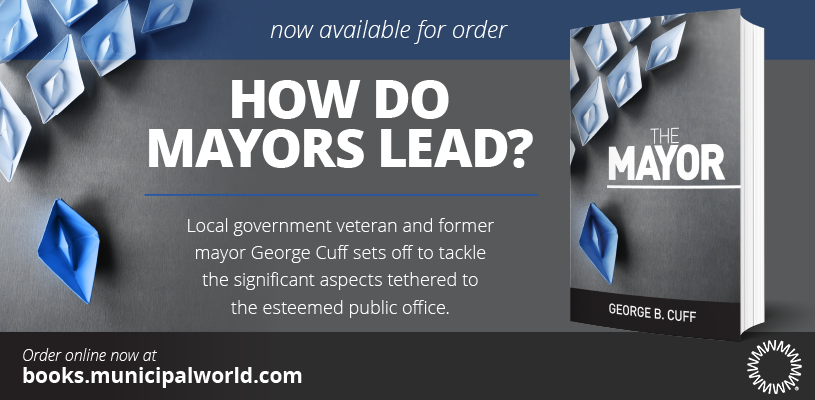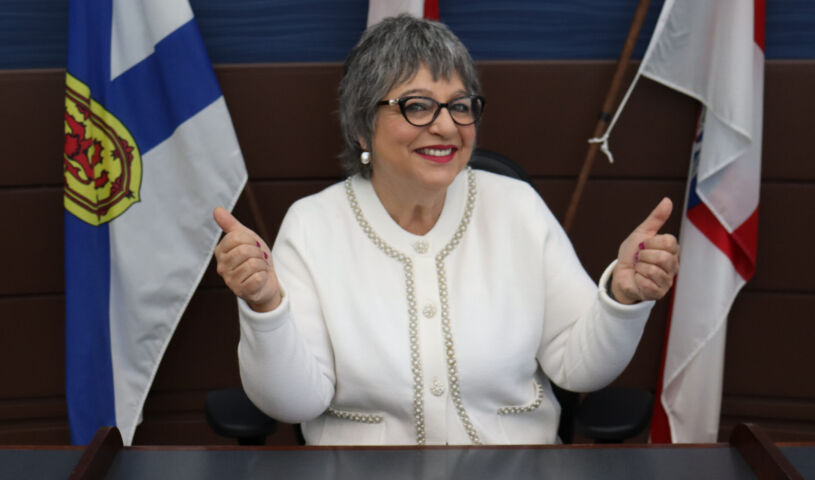Transparency Showcase 2.0 continues to champion open data
 Shelby Gagnon, an Anishinaabe and Mushkegowuk artist, created original artwork to represent “The Minutes,” a weekly podcast by the City of Thunder Bay that explains city council decisions. Photo: Transparency Showcase
Shelby Gagnon, an Anishinaabe and Mushkegowuk artist, created original artwork to represent “The Minutes,” a weekly podcast by the City of Thunder Bay that explains city council decisions. Photo: Transparency Showcase
The Information and Privacy Commissioner of Ontario launched the inaugural Transparency Challenge in 2023. The goal of the showcase was to share innovative public approaches to government transparency.
Given the success of this year’s endeavour, it would seem Patricia Kosseim has hit upon a winning formula. And, in some respects, there was no need to change the basic structure of the challenge.
“It’s the same goal … to encourage transparency and build a culture of transparency,” Kosseim said. “And as we all know, recent events underscore how important transparency is to a healthy democracy.”
Version 2.0
The Transparency Challenge includes a virtual 3D gallery of submissions from Ontario’s public and like-minded institutions. These projects showcase the positive impacts of transparency and open data on the day-to-day lives of Ontarians.
The first year saw 14 submissions featured in the showcase. This year, another 17 have been added. Contributing to the showcase this year were cities like Toronto, government entities such as the Ministry of Colleges and Universities, public institutions such as the Ontario Energy Board, and even law enforcement organizations like the Ottawa Police Service.
While the tenants of the showcase were unchanged for 2024, Kosseim said there were a few differences. For one, more people were generally enthusiastic about the showcase and their desire to contribute to it. While her office had to reach out more in that first year, it seems by year two, people were more excited to take part without any prompting at all.
Another change this time was greater emphasis on was the original artwork associated with each entry. That focus on original artwork, Kosseim said, means that none of the submissions featured images created by AI.
“They’re all original artwork from artists that we commissioned, and so this year we decided to put greater emphasis on the artwork to give it a real visual display and to be able to show in the real spirit of an art gallery,” Kosseim said. “The essence of these projects was different, and I’d say that was a little underplayed last year, but yet it was so beautiful.”
Innisfil’s Use of Open Data
Kosseim said she was “very enthusiastic” about the response to the first Transparency Challenge. But this time, the call was put out to projects not only on open data and open government, but also examples of best practices of how institutions are transparent with their information management practices. In other words, how are they transparent with the personal information they collect, use and disclose.
The Town of Innisfil exemplifies transparency by informing citizens about the data it collects and its intended use. In 2022, Innisfil became the first Canadian municipality to join Helpful Places’ inaugural cohort, creating visual standards for transparency and accountability in public spaces.
Collaborating with other pioneering municipalities in France and the U.S., the town installed sensors in garbage bins at two of their most popular public parks to monitor usage. Signage was set up to allow people to access detailed information about the technology being used. By scanning a QR code, people could learn about the data being collected, who was collecting it, and how it was used and managed.
Damien Mainprize, a business performance specialist with the Town of Innisfil, said there was a streamlined maintenance aspect to the program for one. But secondly, a big component of the project was the signage, which includes a small blurb to let the public know what the purpose is of the project.
“There is a QR code that is unique to that spot and what that allows any passerby resident, somebody who wants to learn more, to do so,” Mainprize said. “That was a really powerful part of doing this, not just from a notification perspective of making sure that our residents and others in our public spaces know about what we’re doing, but to invite them to be part of the conversation so that we could gauge future deployments.”
Thunder Bay’s City Hall Conversations
Conversations are at the heart of another of the showcase’s featured initiatives.
“The Minutes” is a weekly podcast by the City of Thunder Bay. The podcast focuses on decisions made at city council, as well as a clear summary of each item discussed in the meetings, an explanation of the decisions and their impact, next steps after decisions are made, and context about the items under discussion.
The podcast is produced entirely by city staff and aims to provide an objective perspective on the topics covered and with no council involvement.
Jeff Walters is a former CBC reporter and current communications officer with the City of Thunder Bay. Walters said once they were made aware of the showcase, he knew “The Minutes” would be a perfect fit. And once the city clerk’s office became aware of the showcase, they were excited to share it as an example of transparency in local government.
Walters said it was obvious that the “The Minutes” would be a good fit for the showcase. But as a former journalist with some 15 years’ experience, he was also aware that the need for government to be not only transparent but also accountable to the public is why he is a supporter of the showcase.
“It’s a way that anyone across the province, or anyone across the globe really, can learn about different ways that government is trying new things. And I learned when I came to the city that trying new things can be difficult sometimes in the municipal context,” Walters said. “I think to be able to highlight those things that can take years to accomplish and to show the public what we can do … it’s great.”
View From the Top
Kosseim would be the first to say that transparency is essential in building trust with any order of government. Certainly local government is what she’s focused on and so without that level of trust it’s hard to bring community together.
That said, Kosseim sees “very promising signs” that transparency is being taken seriously. For one, she acknowledges there are more access to information requests than in previous years as people are availing themselves of their right to seek access to government information.
Those requests are also being processed more quickly. Last year, the provincial sector completed over 67 per cent of Freedom of Information (FOI) requests within the first 30 days. That’s a 16 per cent increase over the year before – which, again, Kosseim sees as a positive.
Another interesting fact, the municipal sector had more than 80 per cent of FOI requests responded to within the first 30 days. That level of responsiveness is something she also finds promising.
“I find the stats very inspiring. I find the response to our challenge very inspiring. We all want more trust in our governments, in our public institutions, and we want Ontarians to be able to have confidence in their governments,” Kosseim said. “Why not underscore and encourage it (transparency) and promote it to others? Inspire others to do the same, so it’s not your typical sort of regulatory approach of bringing down the hammer only when things go wrong. This is a much more I’d say a positive way of encouraging transparency as a culture.” MW
✯ Municipal World Executive and Essentials Plus Members: You might also be interested in Sean Meyer’s article: An opportunity to showcase municipal innovation.
Sean Meyer is digital content editor for Municipal World.
Related resource materials:



